.30-caliber Punch for Your AR-15 with the Option of Quiet Shooting
The .300 Blackout is becoming an increasingly popular hunting round. Many hunters are making a 5.56/.300 conversion to their existing AR configurations or buying a .300 upper receiver outright solely for the purpose of hunting. But what about .300 Blackout hunting cartridges?
Northern New England is ablaze with brilliant foliage and morning frost coats our fields. For those of us who hunt it’s not only a glorious time, but also a harbinger of deer season. Expectations are high in my area. Our normal allotment is one deer per year, but a succession of milder winters and bountiful acorn crops has dramatically increased the herd. Previously coveted “doe permits” were awarded to all who applied and many lucky applicants, including me, even scored “bonus tags,” good for extra antlerless deer.
But, on a personal note, a technical difficulty involves recoil. Limits imposed by a recent surgery restrict my firearms to those less likely to unravel body parts. A tried and true .243 Winchester is the logical choice, but the mild-mannered .300 Blackout is another option. And, this time around I’ll have a better handle on suitable loads.
This article covers my experience using different types .300 Blackout hunting ammunition. I cover a variety of loads in this article and mention a few products. For ease of reference, I have assembled those in the chart below if your intent is to make any purchases from here for your hunting endeavors.
| Product | Retailer |
|---|---|
| .300 BLK AR Barrel | Optics Planet |
| .300 BLK 10.5″ Upper | Palmetto State Armory |
| Complete .300 Upper Receivers | Optics Planet |
| Complete .300 Upper Receivers | Palmetto State Armory |
| Sig Elite Match Grade .300 220gr Open Tip | Optics Planet |
| Hornady .300 AAC GMX 110gr | Sportsman’s Guide |
| Hornady .300 AAC V-Max 110gr | Sportman’s Guide |
| Hornady Subsonic Sub-X 190gr | Sportman’s Guide |
| Sig Subsonic 205gr Hunting Tip | Optics Planet |
Be sure to check the Bulk Ammo Deals page for related .300 and related calibers.
Let’s Start by Stepping Back in .300 Blackout Time
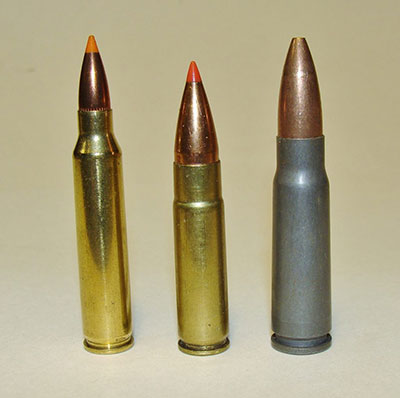
As many readers are probably aware, the recent .300 Blackout is the culmination of efforts to develop a reliable AR-friendly cartridge with tactical advantages; specifically, the ability to fire both supersonic, and quiet subsonic loads.
To achieve the latter, during development phases (beginning with the “Whisper”), relatively short .221 Fireball cases were expanded to .30-caliber and loaded with extremely heavy bullets – of 190-grains or more. The stumpy rounds with their ultra-long projectiles certainly looked odd, but they could fit in standard AR-15 magazines.
They also generated the pressures required for reliable function of an AR at subsonic velocities, when using the necessary small charges of propellant. Elimination of a supersonic crack resulted in an extremely quiet report when fired through a silencer. And, a switch to light 110 – 120 grain supersonic bullets, fueled by more powder, permitted muzzle velocities approaching 2400 fps. These ballistics are similar to those generated by a 7.62×39 Russian AK-47 round via a simple AR upper receiver swap.
Today, there are plenty of .300 Blackout ammunition choices, as well as completed rifles. However, for the most part, conversion of an AR-15 from its standard .223/5.56mm chambering to .300 Blackout only requires a different barrel (see below). For that matter, handloaders can even form .300 BLK cases from shortened .223/5.56 NATO brass.
.300 Blackout Hunting Ammo Rundown
Subsonic Concerns. Subsonic .300 cartridges are readily available (see here). Some promising supersonic projectiles existed, and newer BLK-specific types were appearing, but subsonic pickings were lean. Those I used were 220-grain jacketed soft-points intended for .30/06 velocities. Odds of expansion when lobbed at 1025 fps seemed remote so, despite their quiet suppressed report, they were relegated to range use while waiting for a suitable heavyweight. During the interim, my focus shifted to supersonic hunting loads.
Practical Bullets
No doubt, driven by its tactical provenance, plenty of .300 Blackout hunting ammunition information exists. But, much of it still centers on development and function. Unlike the classic hunting cartridges (.30/06, etc.), .300 BLK field reports can be harder to nail down. I ran into this issue several years ago when deciding to give the .300 BLK a try on game. At that time I was forming my own brass to use with .30-caliber component bullets.
Supersonic Options. Subsonic .300 cartridges are also readily available. To strike a balance of velocity and flat trajectory, I went with 110 – 120-grain expanding spitzer-type bullets. Hand-loaded 110s easily clocked 2350 fps and shot reasonably well from the fast-twist 1:8 rifling optimal for ultra-heavy types. Accuracy ran 1 .5 MOA or better (1 ½” at 100 yards) using several expanding types.
Those I tried from Speer and Hornady seemed more than up to the task for our large norther coyote-hybrids with gray wolf genes. But, for use on larger animals, lightweight conventional .30s have poor sectional density which can limit their penetration.
Plus, expansion typically results in shedding of some core and jacket material. Heavier types (150-grains or more) might seem better, but most are designed to perform at the higher velocities typical of a .308, etc. Also, when loaded at Blackout speeds, they have loopy trajectories.
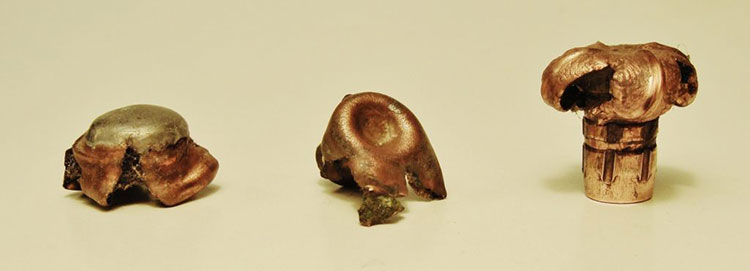
Fortunately, tough monolithic types can greatly enhance performance. I, and a couple others in my deer hunting circle, have experience with the solid-copper Triple-Shocks sold by Barnes. We’ve used them with success in several big game calibers. Recovered examples are rare due to their phenomenal penetration, but those on hand exhibit nearly 100% of their weight despite classic mushrooming.
The timing was fortuitous since Barnes had introduced a new .300 BLK- specific TAC-TX variation with an extremely long and pointed plastic nose cone. This design approximates the overall length of a .223 cartridge when seated in a Blackout case for a better fit in AR magazines. I was able to snag some 110-grain component-bullets and soon had a functional handload. They functioned well, and displayed accuracy close to one MOA in several rifles, while clocking 2350 fps from the muzzle. It was time to take the Blackout hunting…
Useful Supersonic Hunting Loads
I still had some meat in the freezer but it needed topping-off, and a spike or crotch-horn buck seemed perfect for a trial with a Barnes TAC-TX. In my area, when field-dressed, an average specimen weighs around 125 pounds (or 155-ish on the hoof).
Hunting Whitetail Deer with a .300 Blackout
During one very cold November morning a spike-buck trotted by and stopped just long enough to present a 70-yard quartering shot. When the AR spoke the deer took off like a scalded dog and rocketed into thick woods. At that point I regretted not going with a more substantial caliber, but as it turned out, he’d piled up stone-dead at the end of an 90-yard dash. The solid-copper Barnes 110-grain TAC-TX struck spot-on and exited just behind the spike’s off shoulder, leaving a hole typical of more traditional deer calibers. Needless to say, there are .300 Blackout loads suitable for deer hunting.
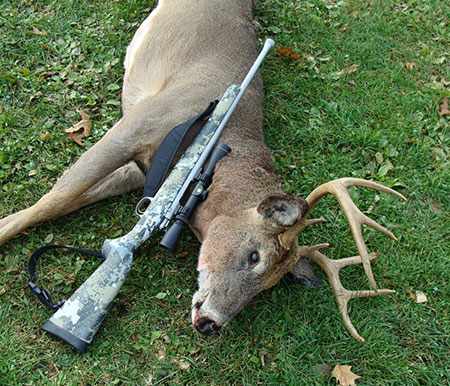
Since then we’ve taken several more bucks with the .300 Blackout and TAC-TX bullets, including Barnes 120-grain factory loads. The latter is probably the better Blackout deer load, but I stick with 110s to approximate the zero of my 110-grain general-purpose load.
As a rule of thumb regarding penetration, solid-copper bullets will bump you up at least one weight-class. Makes sense since, so far, no TAC-TXs have been recovered.
Granted, none of these deer warrant entry into the Maine Big Buck Club, but my spike was by far the smallest. Interestingly, the rest traveled much shorter distances and all were one-shot kills.
These Blackouts included ARs and bolt-actions with 1:8 twists, and none were mounted with suppressors. Their 16-inch barrels maximize velocity without extra length or weight. Nevertheless, recoil is negligible and the report less obnoxious than a .223. If launched at 2350 fps and zeroed around 1 ½-inches high at 100 yards, a sleek 110 TSX will strike about that amount low at 200 yards.
Another monolithic that performs similarly to the Barnes is Hornady’s 110-grain GMX. Although these bullets optimize the Blackout’s performance, I limit their use on deer to inside 150 yards. And, I’ll pick a more powerful caliber for use on big bucks, etc. So far the only hogs in my area reside inside pens, but I’m betting a well-placed solid-copper 120-grainer would tough enough to lay one low. The downsides? They’re fairly expensive.
Hunting Tough Varmints with the .300
My more affordable general-purpose load is topped with Hornady’s 110-grain V-MAX. Although I use handloads, Hornady sells a factory-loaded version. Either way, they clock around 2350 fps from various 16-inch barrels. The bullet readily expands but still has enough mass to clobber large eastern coyotes, bobcats, and porcupines. Hide-hunters won’t appreciate this choice because a large exit-hole is likely, but tracking should be a non-issue with halfway-decent hits. Suppressed, due to its sonic crack, the report is similar to a HV .22 LR report.
I’ve also had good luck with 110 V-MAX loads in a suppressed 10.5″ AR pistol, which is especially handy for coyote missions involving blinds. Velocity-loss is a minimal 100 fps due to efficient combustion of the Blackout’s small powder charge. Accuracy from numerous firearms has been decent with 5-shot groups running 1 ½ MOA (or often smaller). I wouldn’t hesitate to use the 110 V-MAX on the above critters out to 200 yards. Others report good results on feral hogs. I’d use this load in a pinch on deer, but I’d much rather stick with a solid-copper bullet.
Subsonic .300 Loads
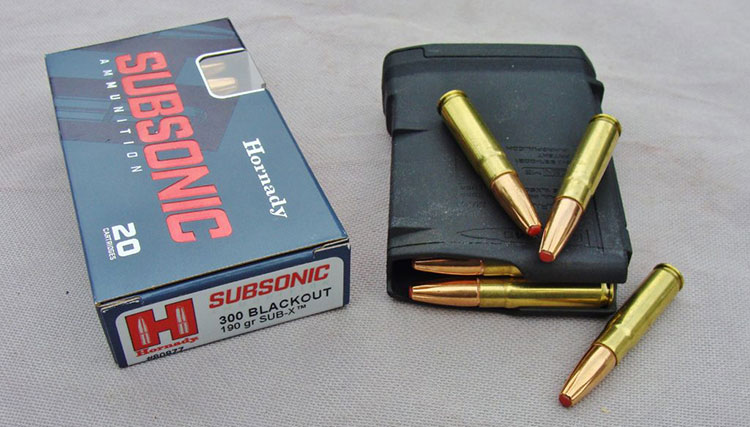
The recent introduction of Hornady’s Subsonic load solved concerns about heavy-bullet expansion in the field of .300 Blackout hunting ammunition. Suddenly, a viable ultra-quiet offering was available for use through suppressors. Hornady’s solution involves a 190-grain SUB-X bullet with a polymer insert (similar to their Flex-Tips), which helps initiate expansion. Muzzle velocity is listed as 1100 fps and expansion will supposedly occur down to 900 fps.
The downside is a trajectory like a brick. Like other slow subsonics, a switch from the above 2350 fps/110s will require around a foot of extra elevation at 100 yards. Regarding effective terminal results, trajectory is by far the greater limiting factor than velocity. Most of my coyote action involves night-vision scopes at fairly close range over bait. I zero the night vision scope at 100 yards, which covers most engagements within this distance. At mid-range (50 yards), SUB-X strikes about 3.5-inches high.
Shhhhh – Quiet Hunting
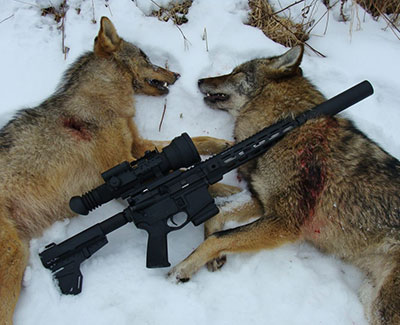
I’ve used Hornady Subsonics on a number of coyotes and bobcats. All were taken inside 125 yards; a threshold for more critical hold-over. Suppressed, this load is very quiet, resulting in opportunities for multiple kills from one spot. Velocity loss in my 10.5” AR is only 70 fps, again, thanks to an efficient powder-burn. But, for now, I’ll skip deer.
I can attest as a firsthand witness that this load satisfies FBI bare-gel testing requirements. However, I’ve also had some cases of apparent bullet disintegration involving big coyotes and both 16 and 10 ½” barrels. Some bore nasty exit holes whereas others had none at all, the latter usually related to shoulder hits.
Hornady specifies a 1:8 twist for the 190s, which covers every BLK I’m using. Interestingly, 220-grain RN subsonics key-holed through paper targets at 100 yards. This indicator of bullet-yawing involved my 10.5” AR, raising concerns about suppressor baffle strikes. The lighter Hornady Subsonics solved this problem nicely and, as a bonus, accuracy was near one-MOA. Results have been similar in a other versions, too, all with 1:8 twists.
Another intriguing load is Sig’s .300 Subsonic 205 Grain Tipped. It uses a bullet with a truncated forward section. The reduced-diameter is designed to eliminate interference with AR magazine ribs. The blunt nose is capped with a polymer tip to initiate expansion at low velocity. The packaging indicates a MV of 1000 fps and Sig recommends barrels of 8-inches or greater. The label also reads Varmint And Predator Tipped; an indicator of rapid expansion. So far, I haven’t had the chance to try any. Same for the interesting Lehigh Defense 194-grain load which uses a solid-copper bullet.
Ballistic Testing
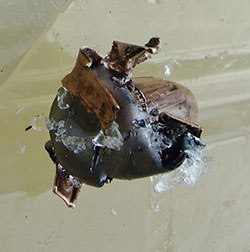
No doubt there are other great Blackout loads, however, those above involve some firsthand experience. Trouble is, like many other reports, it’s still anecdotal. Results involving “several deer” are encouraging but far from conclusive.
Fortunately, I was present for some formal .300 BLK testing with Hornady’s factory staff. Calibrated ballistic gel-blocks were employed per the FBI protocols, which are widely used to quantify penetration and expansion. Critters don’t wear auto-glass or sheet-metal, but the bare-gel phases were somewhat pertinent.
Hornady’s 110 copper GMX went deep and was a dead-ringer for our recovered live-game Barnes samples. The V-MAX also performed as advertised, combining less penetration with dramatic expansion and some fragmentation. SUB-X went deep and displayed obvious expansion with some shedding of its lead core and jacket. All of these bullets created impressive cavities and, for the most part, they reflected actual field results.
Is the .300 BLK Good for Home Defense?
I’d rather not use a solid-copper bullet inside a dwelling due to extreme penetration concerns. And, for me, the jury’s still out on SUB-X for two-legged varmints. So, for now, I’m sticking with V-MAX in a 10.5” AR, equipped with an Aimpoint, weapon light, and suppressor. The concussive report is reduced to that of a high-speed .22 LR, and muzzle flash is completely eliminated.
AR .300 Blackout Concerns
As previously noted, there are potential concerns related to an AR .300 BLK conversion beyond its barrel exchange…
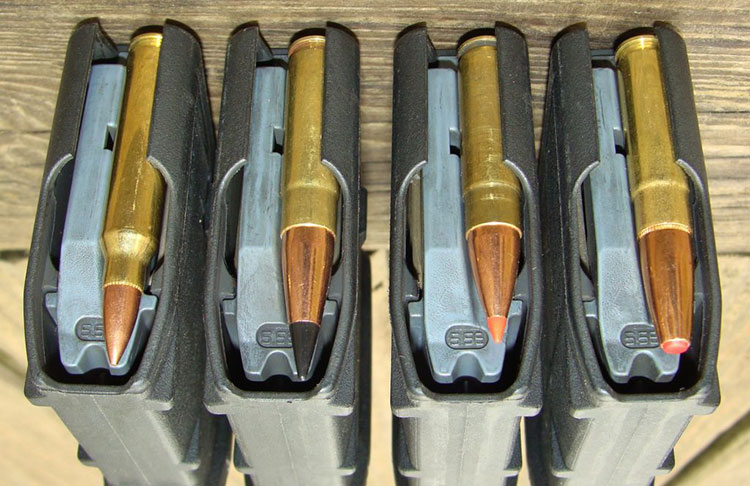
Magazines
My state’s hunting regulations limit semiauto magazines to 5-rounds. For this reason, I use 10-round .223/5.56 P-Mags with 5-shot inserts. Either version works well but those using high-cap types could encounter feeding problems.
The reason involves their opposing ribs. These normally engage the shoulders of 5.56 cartridges but, since .300 BLK rounds are shorter, they tend to squeeze chubby Blackout bullets inward. The polymer types are sometimes filed down to prevent large stacks of short Blackout rounds from tilting inboard. Another easy fix is BLK-specific magazines.
Cartridge ID
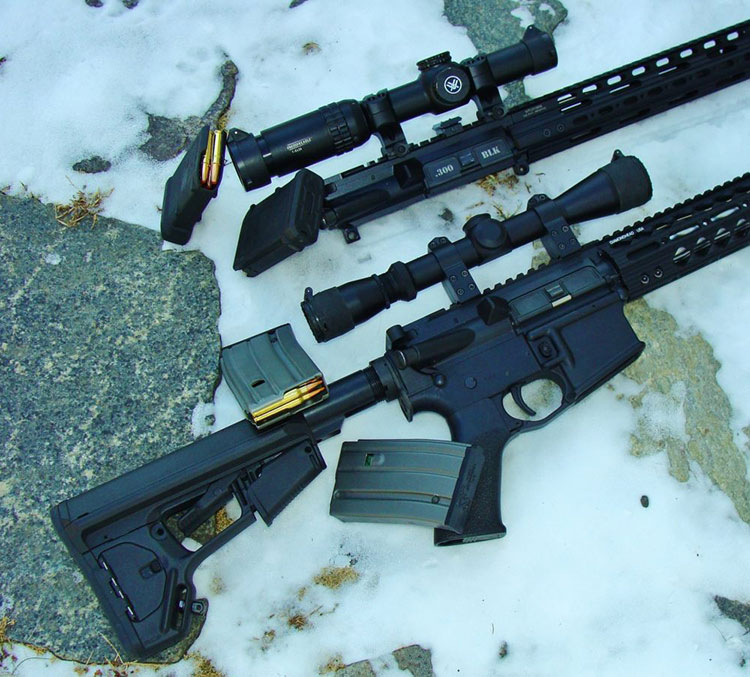
Distinctive magazines are advised to help segregate Blackout loads from .223s. I only use 10-shot P-Mags for this reason. A dust-cover marked .300 Blackout is also worthwhile against loading the wrong caliber, especially for those of us with other ARs.
Pistol-length ARs
My use of subsonic loads is limited to a suppressor since, without one, the report will be as loud as a pistol-caliber carbine. Still, for some shooters, the reduction is enough to justify use subsonics with a bare muzzle.
In a bolt-action or single-shot, function will be a non-issue regardless of the load or barrel length. However, a short-barreled AR could develop stoppages without the back-pressure of a can unless a pistol-length gas system is used.
.300 Blackout Hunting Amm Closing Thoughts
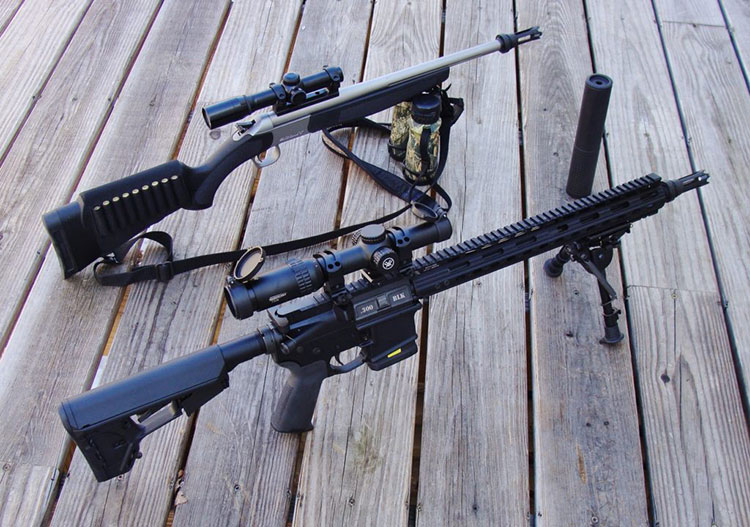
My involvement with the .300 Blackout has expanded beyond ARs to some other useful types. My son’s little Kimber Adirondack bolt-action qualifies as “cute,” but it shoots every load well and carries like a feather.
A couple stainless CVA single-shot break-actions serve as weatherproof truck and ATV guns. All have threaded 5/8×24 muzzles and most are fitted with QD suppressor adapters. Switching one “can” between them only requires a few seconds, BUT, they’re a hoot to shoot without one.
Their mild recoil and report make them worthy of consideration for new-shooters. A previous recent post examined S&W’s affordable AR-based .22 LR M&P 15-22 (read my review of that). It wouldn’t make a bad choice when coupled with a .300 Blackout. And, either way, by pulling two pins, you can add a spare .223 upper. A system like this could be useful for shooters of all demographics, and with the added advantage of widely distributed ammo, you have enough .300 Blackout hunting ammunition choices to get out in the field.